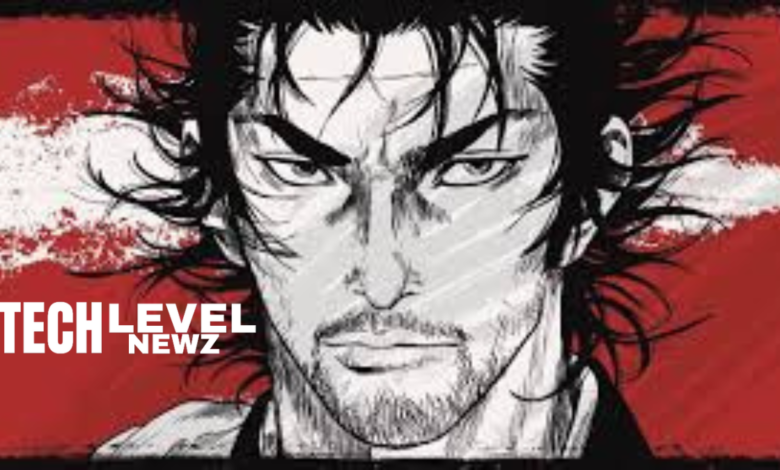Vagabond Manga: Where to Read the Epic Samurai Story Online

Introduction
vagabond manga is a critically acclaimed manga that has captivated readers worldwide with its stunning artwork, deep philosophical themes, and compelling storytelling. Created by Takehiko Inoue, this masterpiece is an adaptation of Eiji Yoshikawa’s Musashi, a historical novel chronicling the life of the legendary samurai Musashi Miyamoto. Unlike traditional samurai tales that focus purely on combat and swordsmanship, vagabond manga delves into the psychology of its protagonist, exploring themes of self-discovery, ambition, and the true meaning of strength.
Since its debut in 1998, vagabond manga has gained a cult following and received multiple awards, including the Kodansha Manga Award and the Tezuka Osamu Cultural Prize. The manga’s breathtaking illustrations and masterful storytelling set it apart, making it a landmark in the genre of historical fiction. Despite its immense popularity, the series remains incomplete, leaving fans eager for its conclusion. This article provides an in-depth look at vagabond manga, its creation, themes, artistic brilliance, and its enduring legacy in the world of manga.
Background & Creation of Vagabond
About the Creator: Takehiko Inoue
Takehiko Inoue is a legendary manga artist known for his ability to blend intense action with emotional depth. Before vagabond manga, he gained fame with Slam Dunk, a basketball manga that revolutionized sports manga. His unique artistic style, which seamlessly combines realism with expressive brushwork, has made him one of the most respected mangaka in the industry.
Inoue’s fascination with historical figures and martial arts philosophy led him to adapt Musashi, bringing a fresh and visually stunning take on the legendary swordsman’s story. His approach was not just to depict battles but to explore Musashi’s inner struggles, making vagabond manga a deeply introspective work.
Inspiration Behind the Story
vagabond manga is based on Musashi, a novel written by Eiji Yoshikawa, which itself is a fictionalized retelling of the life of Musashi Miyamoto. The novel portrays Musashi’s transformation from a reckless young warrior into a disciplined master of the sword. However, Inoue’s version offers a more humanized perspective, depicting Musashi’s flaws, fears, and quest for enlightenment.
Musashi Miyamoto was a real historical figure, renowned as Japan’s greatest swordsman. His philosophy of “The Way of the Sword” and his book The Book of Five Rings have influenced martial arts, strategy, and even business tactics worldwide. vagabond manga captures the essence of his journey, bringing history to life through an emotionally gripping narrative.
Story and Themes
Plot Overview
vagabond manga follows the journey of Shinmen Takezō, a violent and untamed young warrior who later renames himself Musashi Miyamoto. After surviving the Battle of Sekigahara, he embarks on a path to becoming the strongest swordsman in Japan. Along the way, he faces powerful adversaries, including the deaf-mute swordsman Sasaki Kojirō, and grapples with the philosophy of true strength.
The manga’s narrative is a blend of action-packed duels and quiet, introspective moments. It not only tells a story of physical battles but also of internal struggles, questioning what it truly means to be a warrior. Musashi’s growth is central to the story, as he learns that strength is not just about defeating enemies but about understanding oneself.
Themes Explored in Vagabond
One of vagabond manga core themes is self-improvement. Musashi’s journey is a testament to the idea that mastery is a lifelong pursuit. His initial belief that strength comes from raw power evolves as he gains wisdom from experience and encounters mentors who challenge his perspectives.
Another significant theme is solitude vs. companionship. Musashi often isolates himself, believing that relationships make him weak. However, his encounters with characters like Otsū and Takuan Sōhō force him to reconsider the importance of human connections.
Finally, the manga explores philosophical questions about destiny and free will. Musashi’s rival, Sasaki Kojirō, follows a different path—one driven by instinct rather than self-discipline—highlighting contrasting approaches to life and martial arts.
Artwork and Visual Excellence
Inoue’s Art Style
The most striking aspect of vagabond manga is its artwork. Inoue employs a mix of traditional ink brush techniques and highly detailed line work, making each panel resemble a classical Japanese painting. His use of light, shadow, and texture enhances the realism of characters and settings, immersing readers in feudal Japan.
The fights in vagabond manga are intense yet poetic, with fluid movements and dynamic angles that capture the chaos and precision of sword combat. Unlike many action-oriented manga, vagabond manga often depicts battles with minimal dialogue, letting the visuals convey the tension and emotion of each encounter.
Comparison with Other Samurai Manga
Unlike Rurouni Kenshin, which blends samurai action with a more shōnen-friendly narrative, vagabond manga leans towards a mature, introspective tone. Similarly, while Blade of the Immortal offers supernatural elements, vagabond manga stays grounded in historical realism, making it one of the most authentic portrayals of samurai culture.
Hiatus and Future of Vagabond
vagabond manga went on an indefinite hiatus in 2015, leaving fans wondering if it will ever be completed. Inoue cited personal reasons and creative exhaustion, expressing that he did not want to force an ending if he wasn’t fully invested.
While some speculate that the series may never return, others remain hopeful that Inoue will revisit Musashi’s story when the time is right. Regardless of its unfinished state, vagabond manga remains a landmark in manga history.
Cultural Impact and Legacy
The influence of vagabond manga extends beyond manga. It has inspired artists, writers, and even martial artists who admire its philosophical depth. The story of Musashi Miyamoto has been retold many times, but Inoue’s version stands out for its emotional depth and artistic brilliance.
Even without an anime adaptation, vagabond manga has cemented itself as a classic, proving that manga can be both an artistic and literary masterpiece.
Conclusion
vagabond manga is more than just a samurai manga—it is a profound exploration of life, strength, and self-discovery. Inoue’s storytelling and art elevate it beyond traditional action manga, making it a deeply moving experience. Though unfinished, its impact on the manga industry and its readers is undeniable.
Also Read: how to make freeze dried candy




